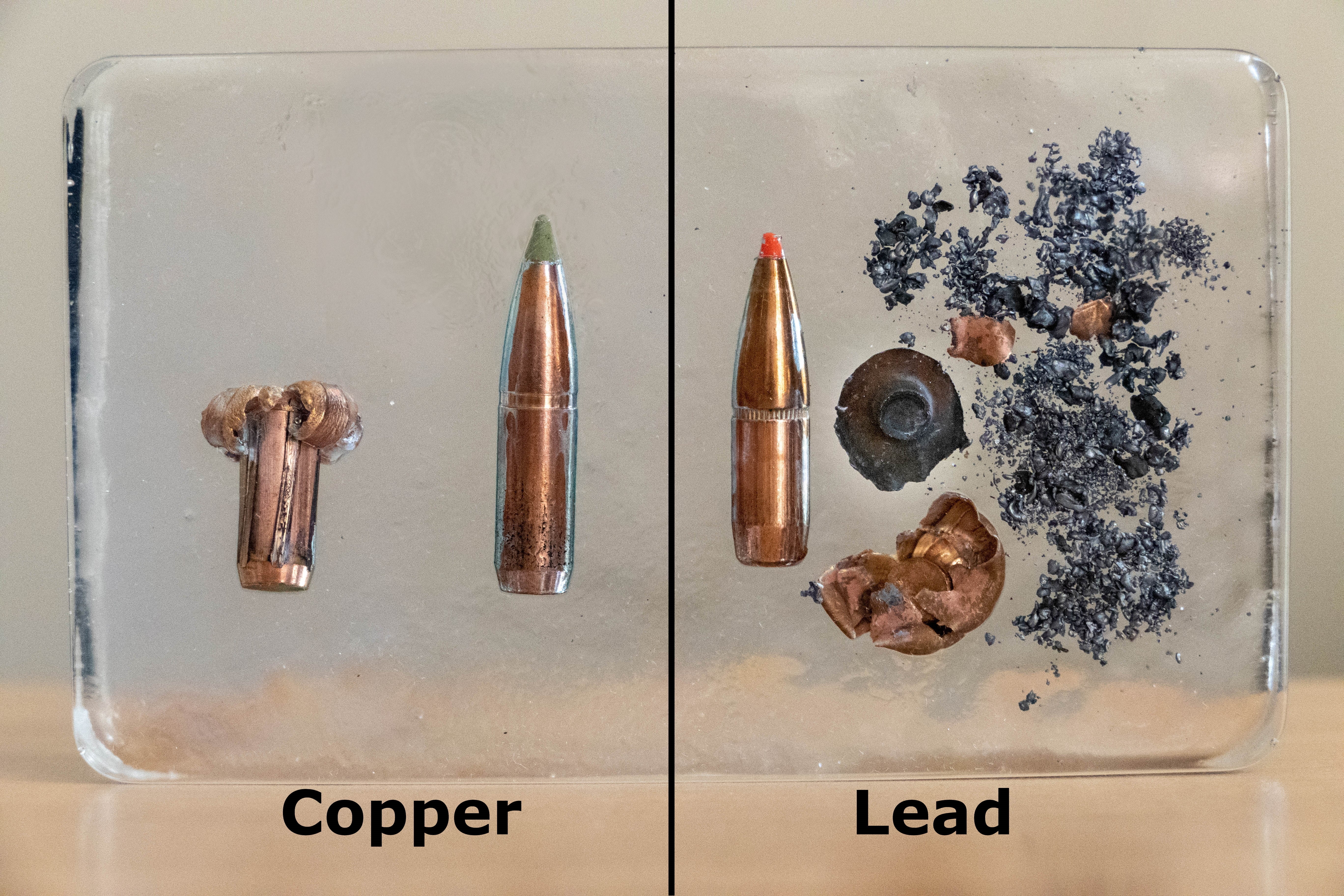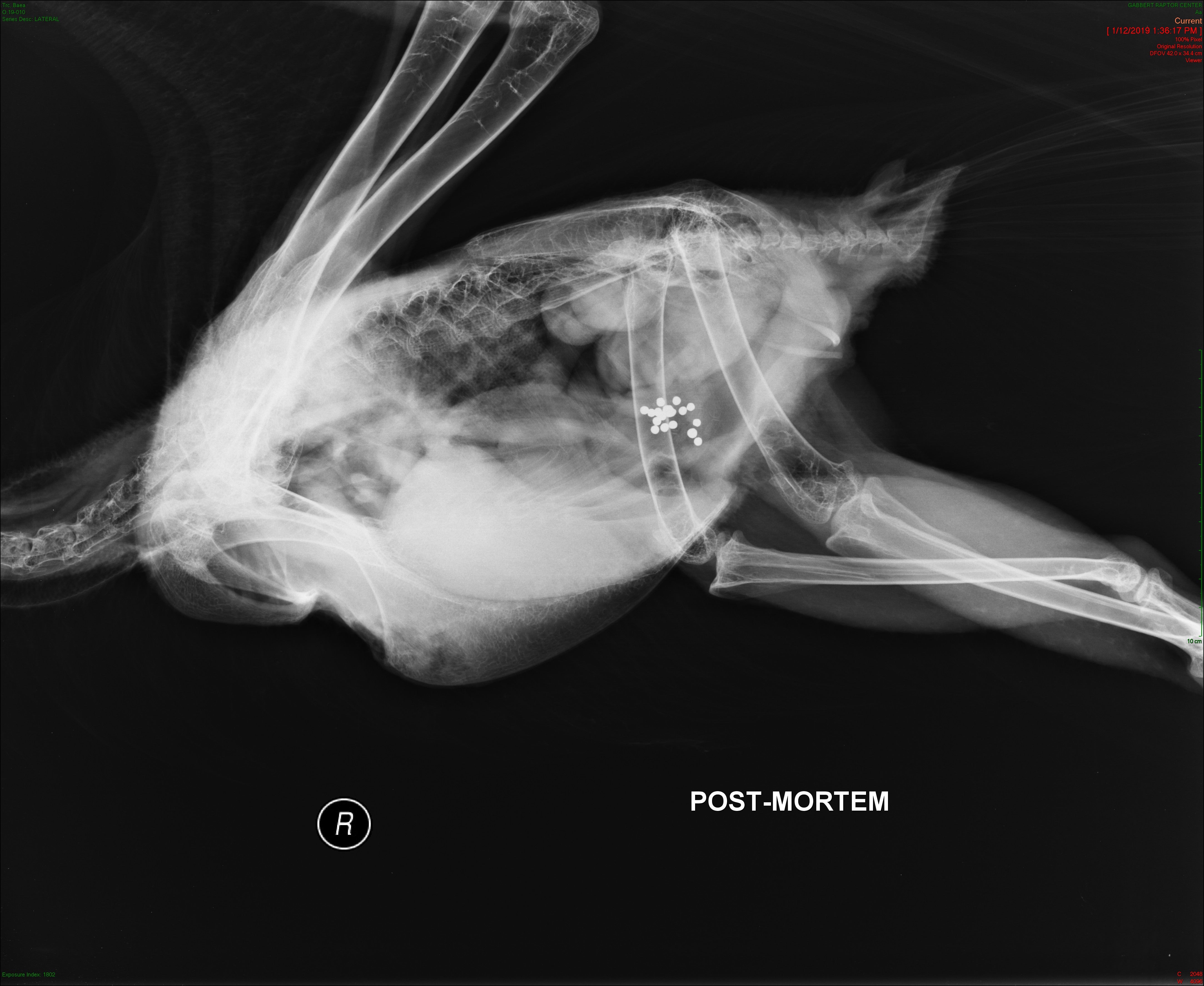It's a common pattern during hunting season in the winter: Hunters shoot elk or deer, then eagles scavenge the waste.
That scavenged meal may have deadly consequences for eagles, according to a study published Thursday in the journal Science.
The researchers detected high rates of lead poisoning among the two most common types of eagles in the US, bald eagles and golden eagles, from 2010 to 2018. Their findings suggest that eagles are ingesting lead fragments from bullets in animal carcasses left behind by hunters.
"Every single time a lead bullet hits a deer, it fragments into many, many pieces," Todd Katzner, a research wildlife biologist at the US Geological Survey and co-author of the study, told Insider. "It only takes a tiny fragment, something the size of the head of a pin, to kill an eagle."
The researchers examined the blood, bone, liver, and feathers of more than 1,200 eagles across 38 US states. Of that sample, 47 percent of bald eagles and 46 percent of golden eagles had signs of chronic lead poisoning. Birds with chronic or repeated exposure to lead can develop lesions, weakness while flying, or convulsions and paralysis.
 Copper bullet (left) versus lead core bullet (right) before and after impact. (Mike McTee)
Copper bullet (left) versus lead core bullet (right) before and after impact. (Mike McTee)
What's more, lead poisoning threatens to stymie the growth of eagle species. The researchers estimated that lead poisoning slowed the annual population growth of bald eagles by 4 percent and golden eagles by 1 percent.
"Over a 20-year period, you're talking about thousands and thousands and thousands of [eagles] that are being removed from the population," Katzner said.
Neither golden eagles nor bald eagles are endangered species. The US bald eagle population has more than quadrupled since 2009, from around 72,000 to 317,000 birds. But the US golden eagle population is still relatively small – around 30,000 birds – and at risk of declining.
"The role of that lead is probably greater for these golden eagle populations, just because these populations are so much smaller and they're in a more precarious situation," Katzner said.
Eagle X-rays show lead fragments inside their bodies
Scientists have known about lead exposure in eagles for several decades.
"Every so often, eagles end up in a rehabilitation facility. They're sick and they get X-rayed and you can see fragments of lead in their digestive tract," Katzner said.
But until Thursday's study, researchers hadn't been able to quantify how dangerous or widespread lead exposure was among US eagles.
 Radiograph of a bald eagle that ingested lead fragments. (The Raptor Center, University of Minnesota)
Radiograph of a bald eagle that ingested lead fragments. (The Raptor Center, University of Minnesota)
"We got samples from Alaska down to Florida, from Maine to California, so we really had this wide sample size that is reflective of this nationwide pattern that we're seeing in these birds," Vince Slabe, a research wildlife biologist at the nonprofit Conservation Science Global and a co-author of the study, told Insider.
Adult eagles had higher rates of chronic lead poisoning than younger eagles, Slabe said, since they had more opportunities to be exposed over their lifetimes.
But several eagles also suffered from acute poisoning – meaning they may have had a brief exposure to high levels of lead. The researchers didn't track whether these birds survived, but some eagles with acute lead poisoning suffer quick deaths, sometimes before developing symptoms.
Acute poisoning was more common in winter, when eagle species had less access to their standard food sources, such as fish, rabbits, and squirrels.
"In the winter season, these animals become less abundant for both [eagle] species and their feeding habits change," Slabe said, adding, "They start scavenging a lot more."
Up to 33 percent of bald eagles and up to 35 percent of golden eagles in the study showed signs of acute lead poisoning.
The researchers also ruled out the possibility that eagles had been exposed by getting shot themselves.
"A small number of the eagles in this study were shot, but in the cases where that shooting occurred, we never took samples from any tissue that could have been exposed," Katzner said.
Slabe said he expects lots of hunters to "willingly switch from lead to non-lead" bullets "once they find out they're potentially poisoning animals."
The California Department of Fish and Wildlife already requires hunters to use non-lead ammunition, such as copper bullets. The New York Department of Environmental Conservation and Alaska Department of Health and Social Services advise hunters to do the same.
This article was originally published by Business Insider.
More from Business Insider:
#Nature | https://sciencespies.com/nature/nearly-50-of-us-bald-eagles-have-chronic-lead-poisoning-heartbreaking-study-shows/
No comments:
Post a Comment